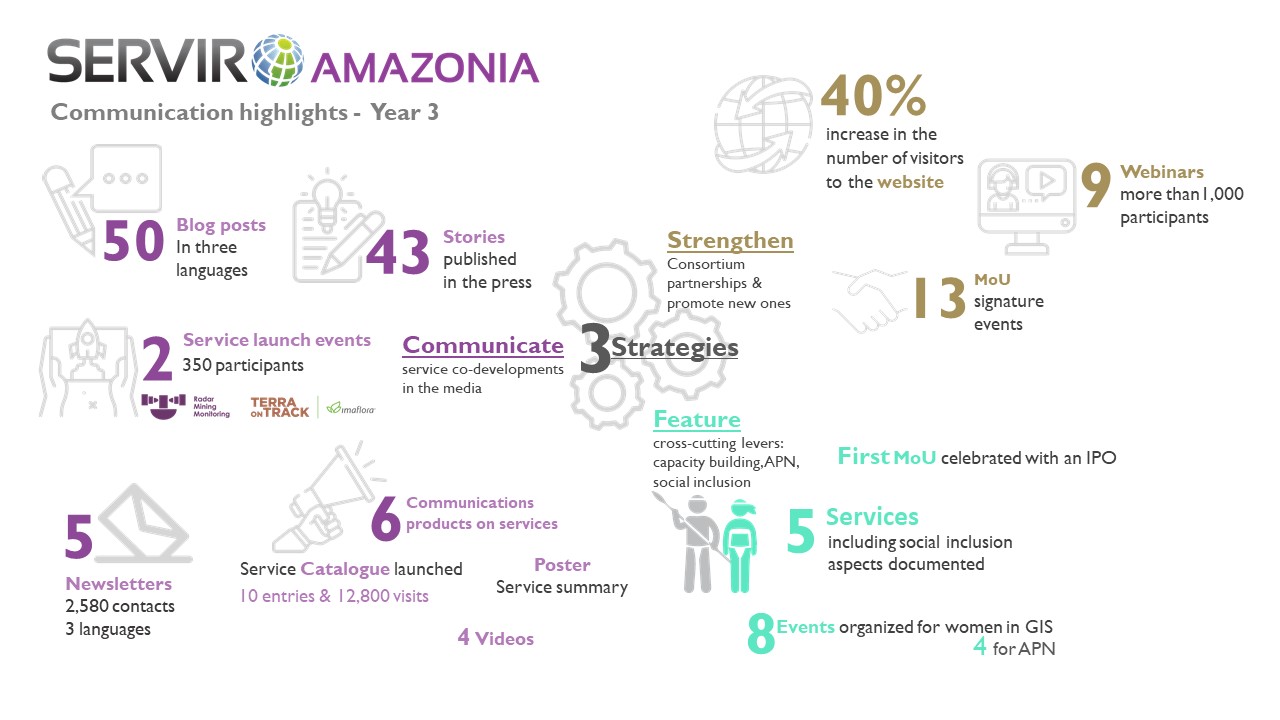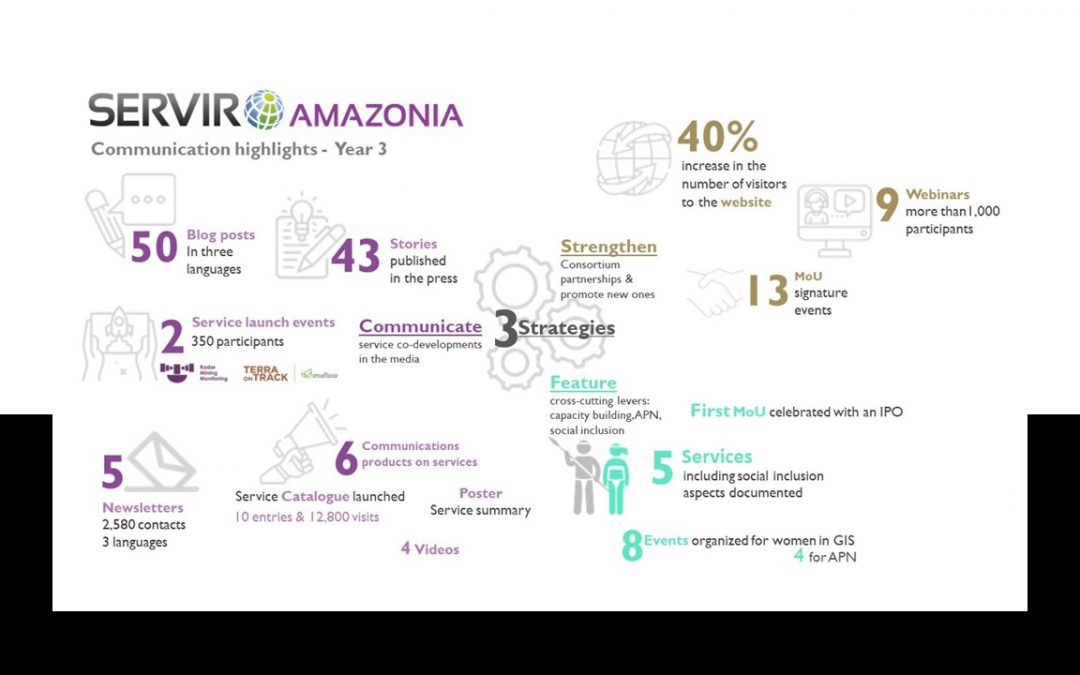Communication activities are a key vehicle for increasing the presence of the Program with stakeholders. Activities in Year 3 focused on three objectives: 1) to communicate broadly about services co-development in the media (program, partner, donor media and general press), 2) To strengthen existing Consortium partnerships and promote new ones, and 3) to feature cross-cutting levers, like the Academic Partner Network (APN), and the work towards social inclusion.
The outstanding communications working group of the Program includes representatives from all five Hub partners: ACCA, Imaflora, EcoCiencia, The Alliance Bioversity-CIAT and SIG, which collaborated on MoU signatures and service launch events, as well as story development, throughout the year. The group received effective support from USAID/Peru, the NASA communications team, and the SERVIR Global support team.
At the Consortium level, Communications has contributed to position SERVIR-Amazonia within partner organizations, their GIS professionals, and decision-makers, as well as executives of NASA and USAID. Year 4 will see increased efforts in communicating more broadly with decision-makers, and some specific service user groups.
The delivery of the first services has generated interest in the press and energized Program communications.
Meetings and events: Despite the pandemic, the Program organized 46 events, trainings and meetings that increased our presence with stakeholders. Among these were:
- 11 MoU signature ceremonies with participation of a representative of the signing institutions and representatives from NASA and USAID
- 12 webinars (6 related to gender and women leadership)
- 6 workshops
- 2 service launches
- 10 training events or technical meetings
In addition, Program staff participated in 4 conferences organized by 3rd parties. An estimated number of 1,000 stakeholders participated in those events.
The following infographic summarizes main outputs for each of the 3 objectives.

Highlights
Service launch and event communications
- RAMI: Ceremony-webinar (see video here, see service demo video here) and some of the press coverage here
- TerraOnTrack: Ceremony-webinar (see video here)
- Global Landscape Forum (GLF): A high-level session was organized at the GLF dedicated to the Amazon on September 21, see summary.
- Citizen Science and Participatory Mapping on Sept 20 &30.
- SERVIR Global Annual Knowledge Exchange (SAGE)
- Communications support and coordination for 13 MoU signatures, and most of the 45 events
Communications products on services
- Publication of the service catalogue in collaboration with SERVIR-Global support team. Each entry contains a description, list of partners, links to applications and list of news /videos. 10 entries and 12,800 visits (more than the website!).
- Publication of a service poster that summarizes current service developments.
- Publication of a service-focused SERVIR-Amazonia video in collaboration with USAID Peru in Spanish, English and Portuguese
- Publication of a video on RAMI and a White Paper for the Global Landscape Forum event. Six special technical bulletins sent by ACCA on RAMI.
- 9 Webinars on services
In addition
- 43 stories published in the press, among those: 14 on MOU signatures, 9 on launch of RAMI, 7 on TerraOnTrack, 6 on Fires, 2 on gender.
- Five Newsletters issued to a master contact list of 2580 contacts.
- Web site: 50 blog posts and event announcements co-written with the team and promoted in social media, with increased effort in publishing most blog posts in all three languages.
Priorities for Year4
The focus of our communications activities shifts in Year 4, where service-specific communications gain importance and first service deliveries are translated into communications products targeted towards decision-makers of partner and stakeholder institutions and a broader public. Social inclusion aspects of services will also be at the center with an increased interest in working with and for local communities, including women and youth with the objective of reaching them as active users of the services.




